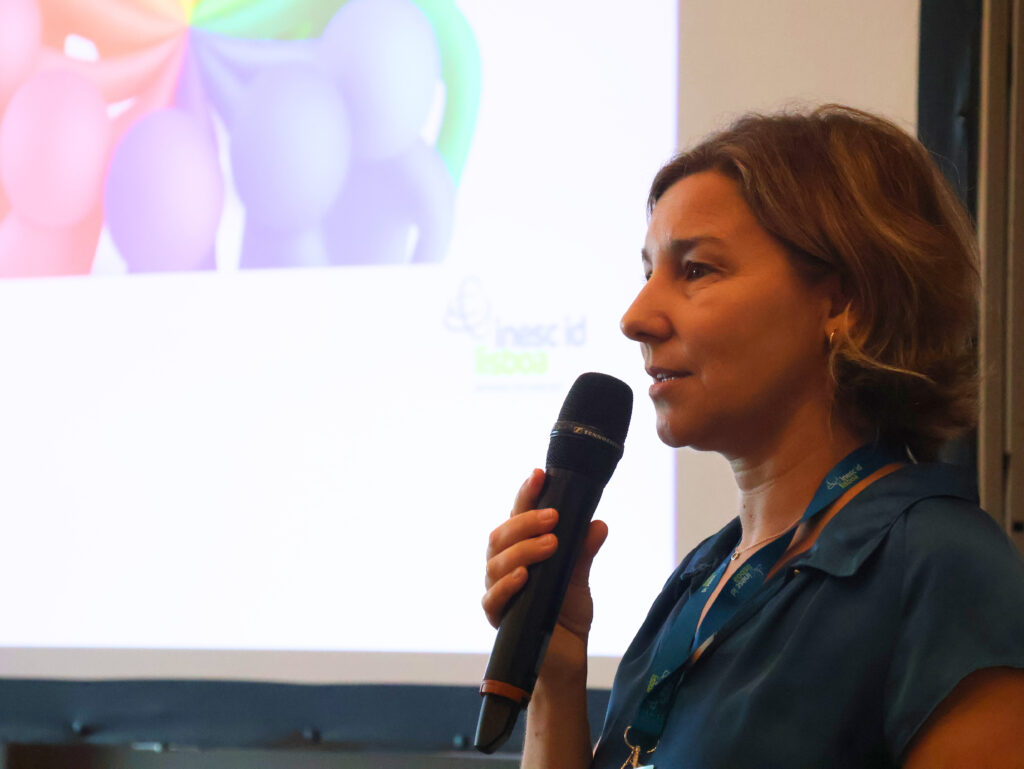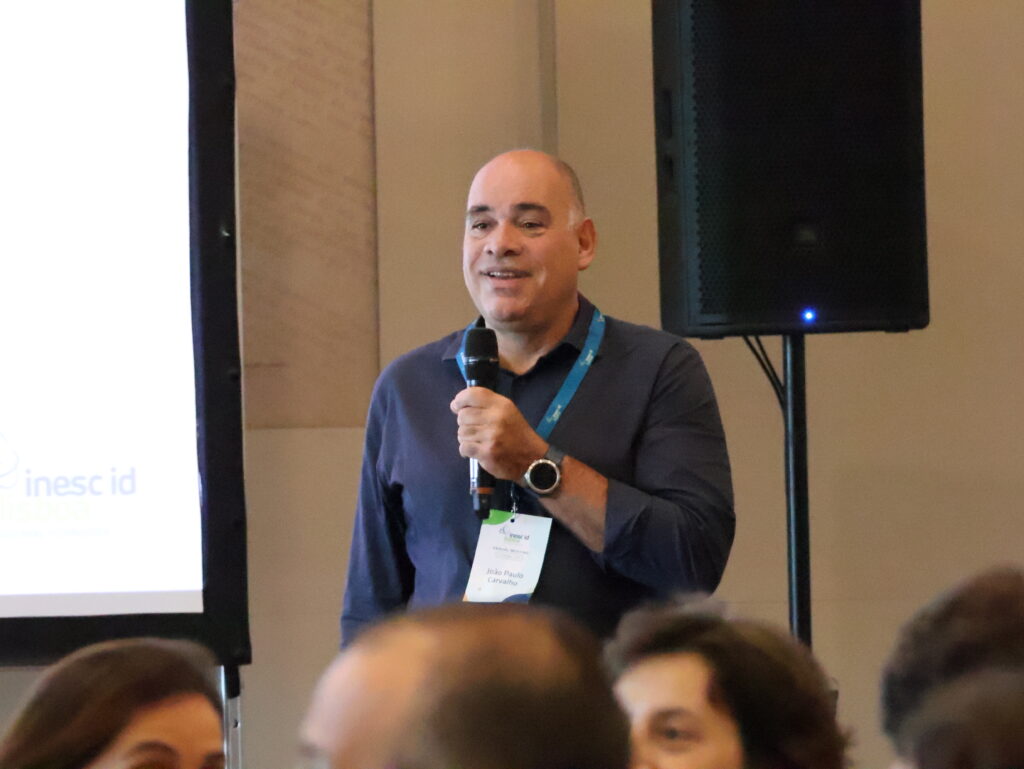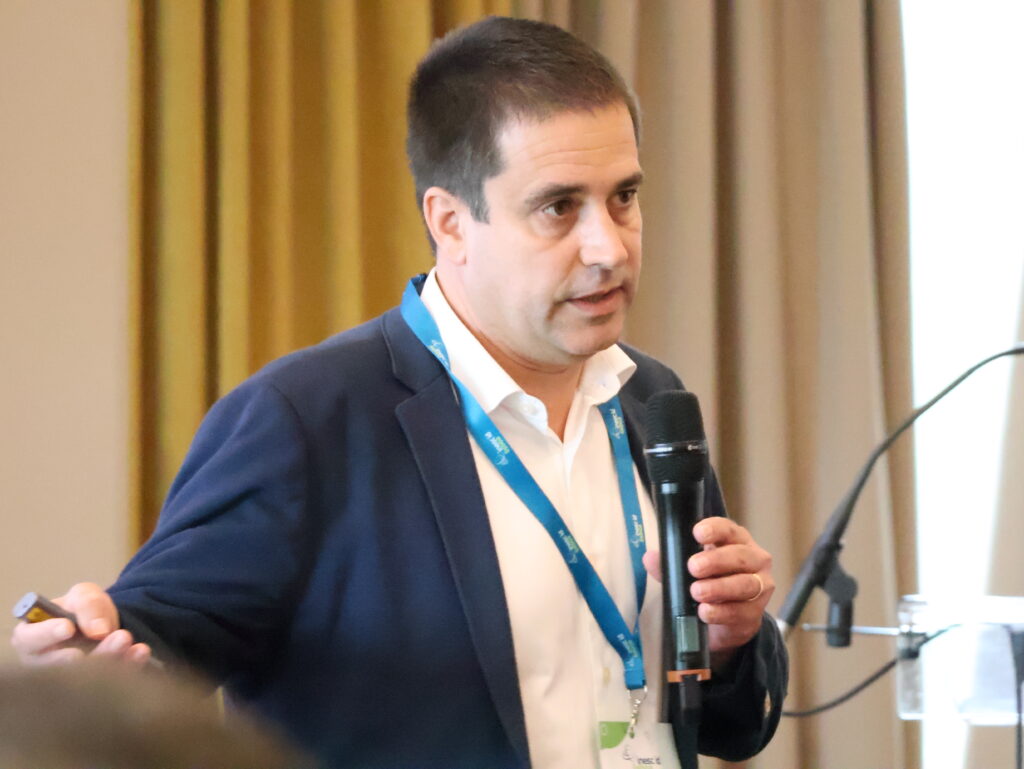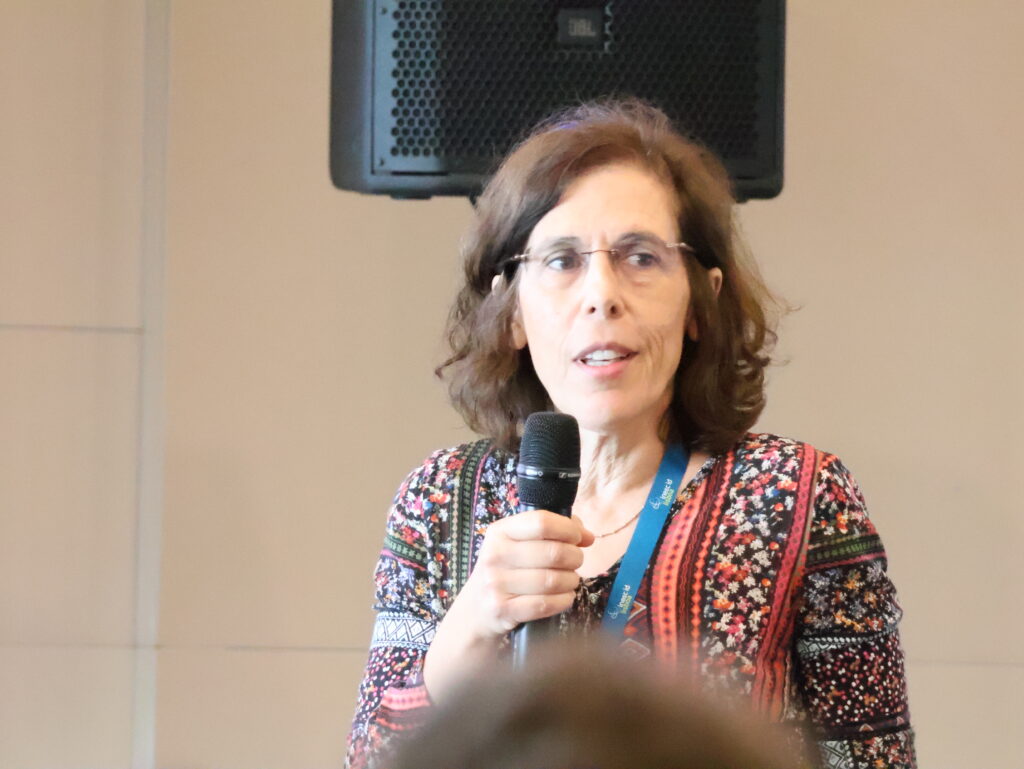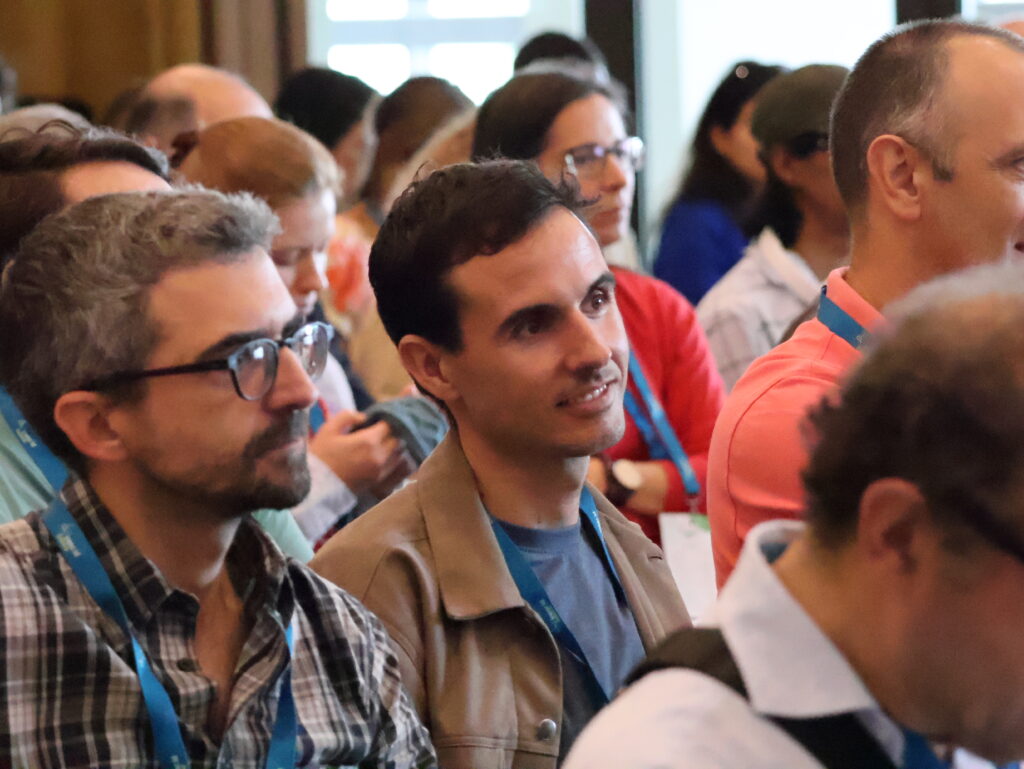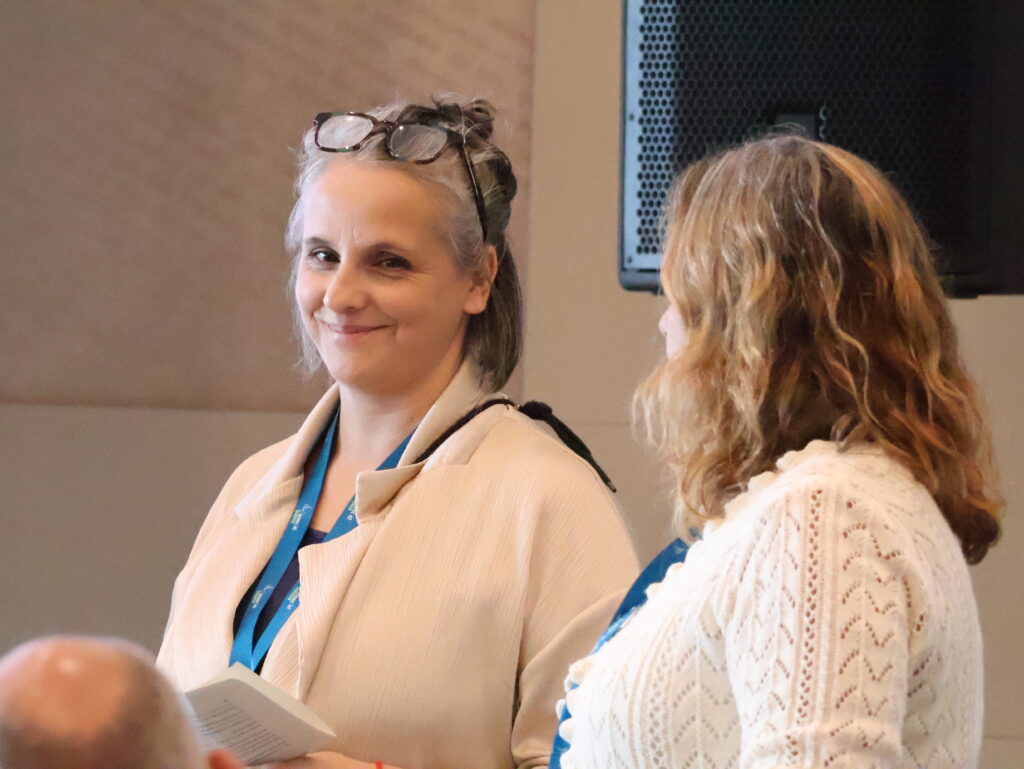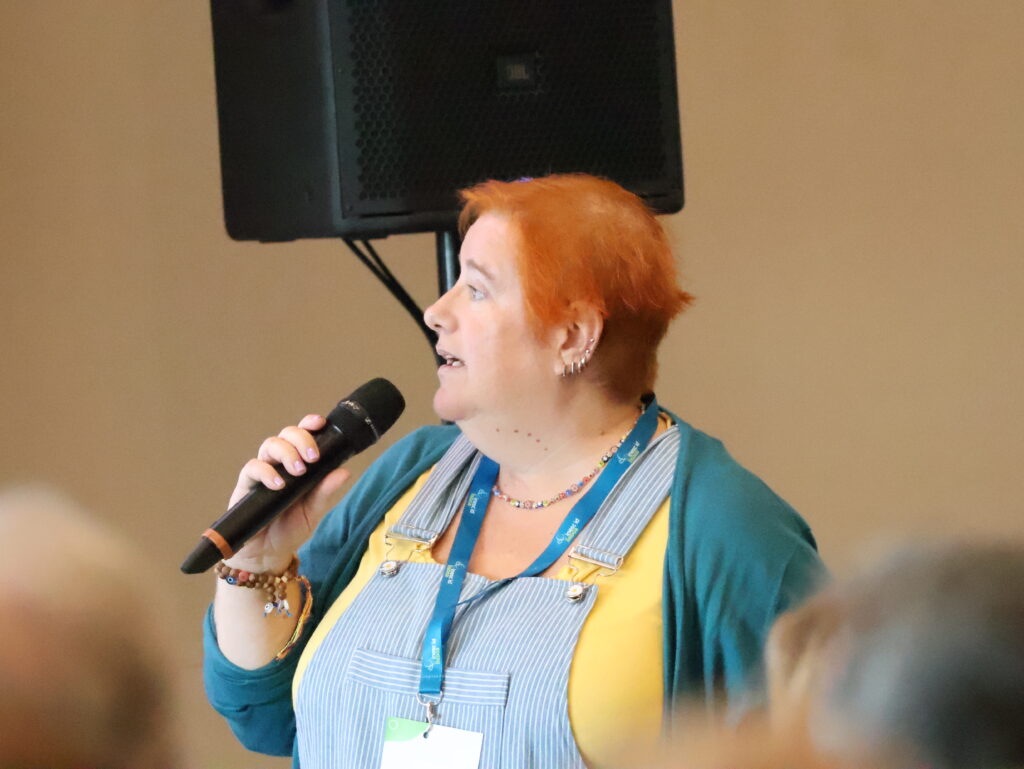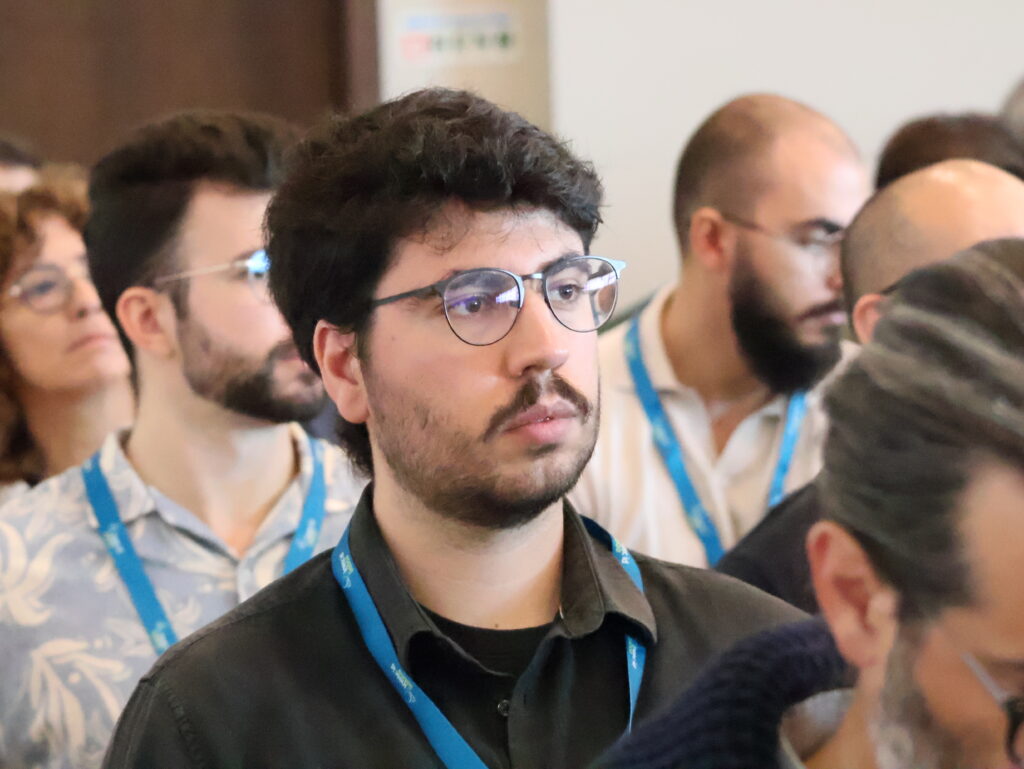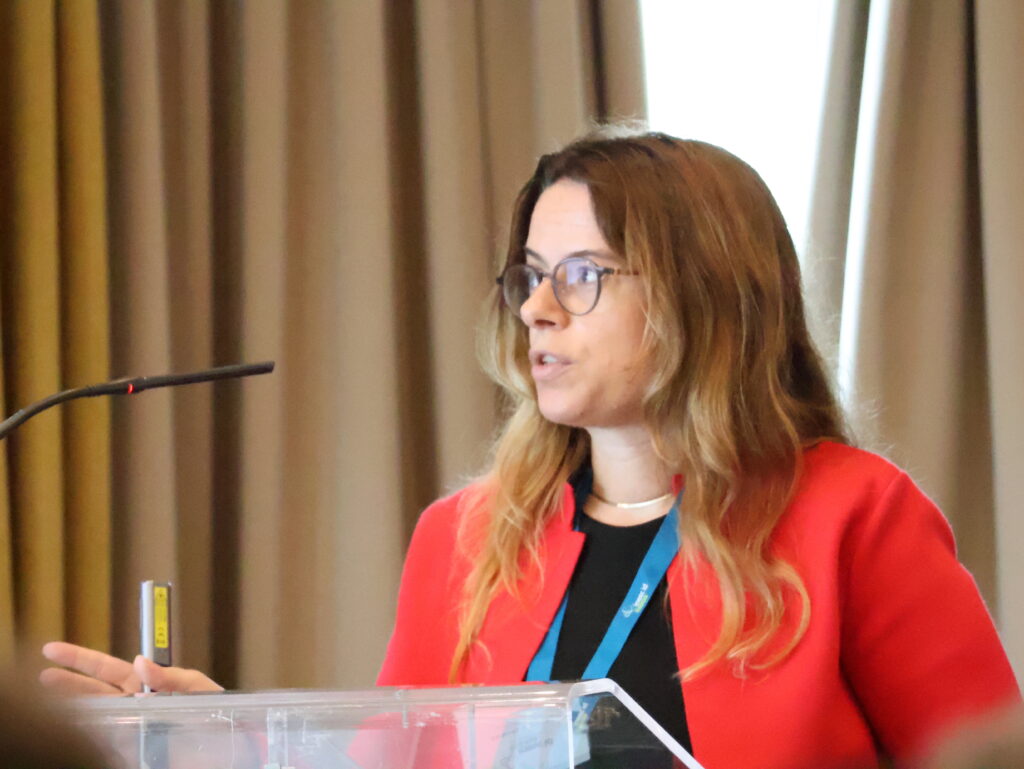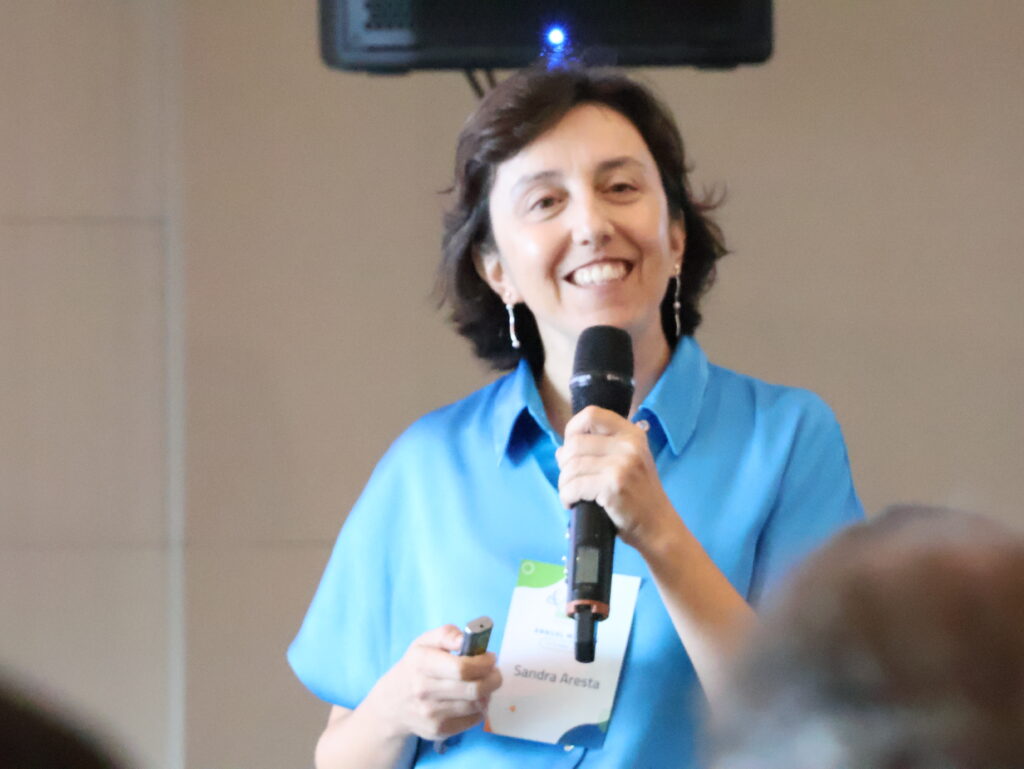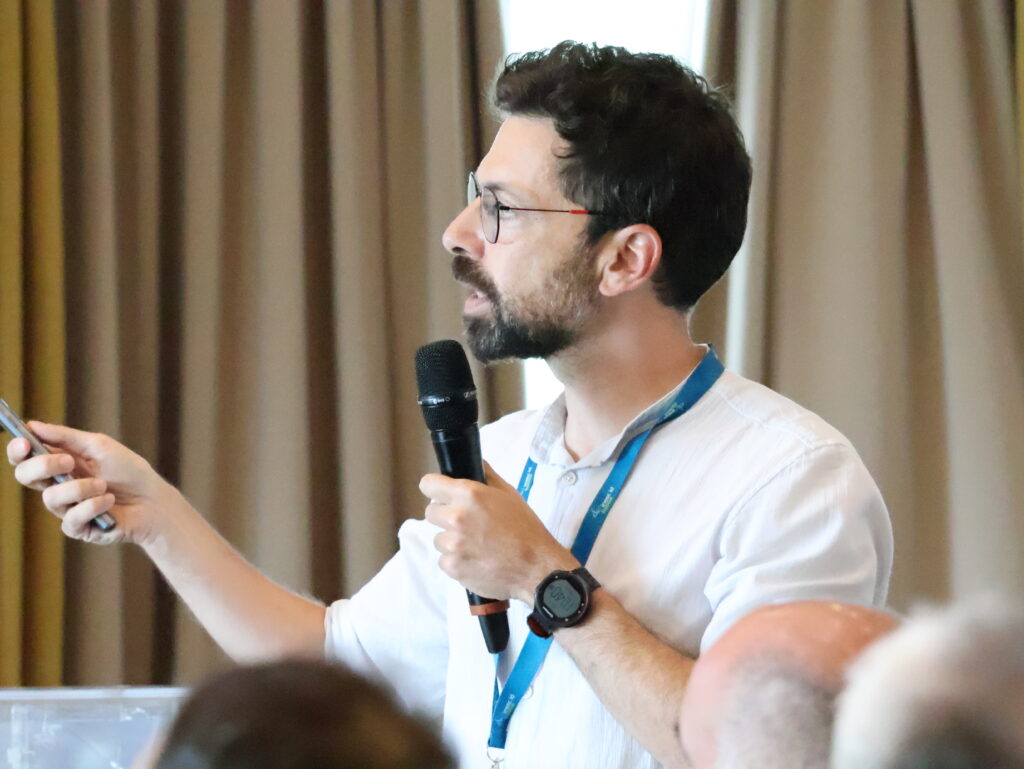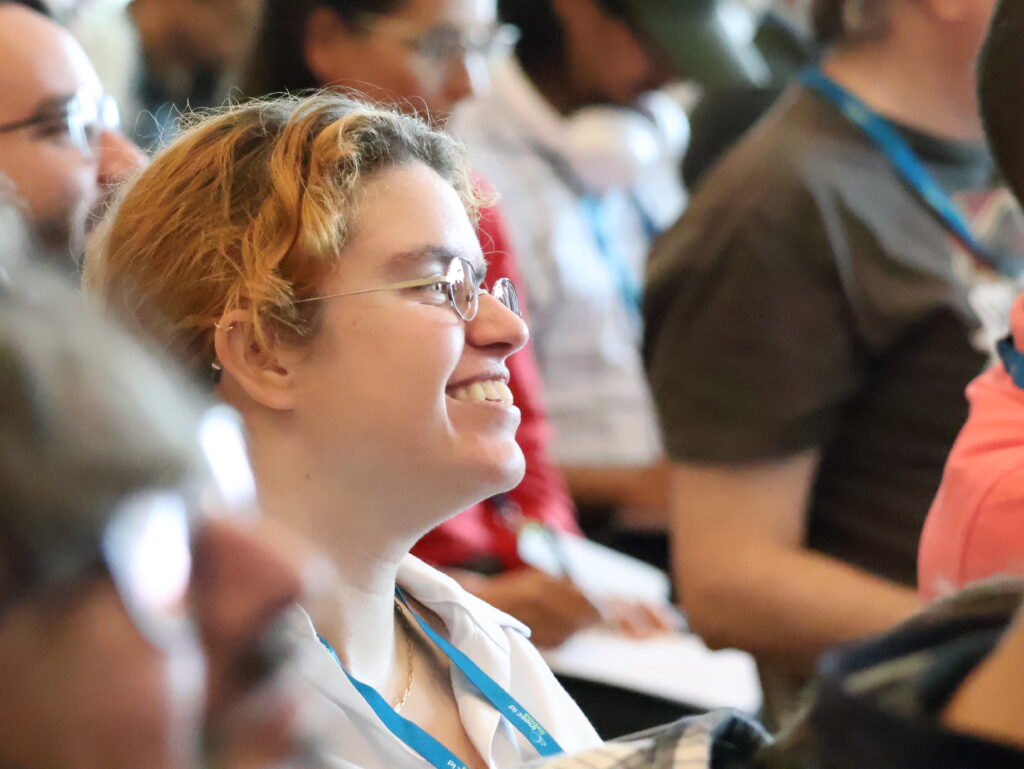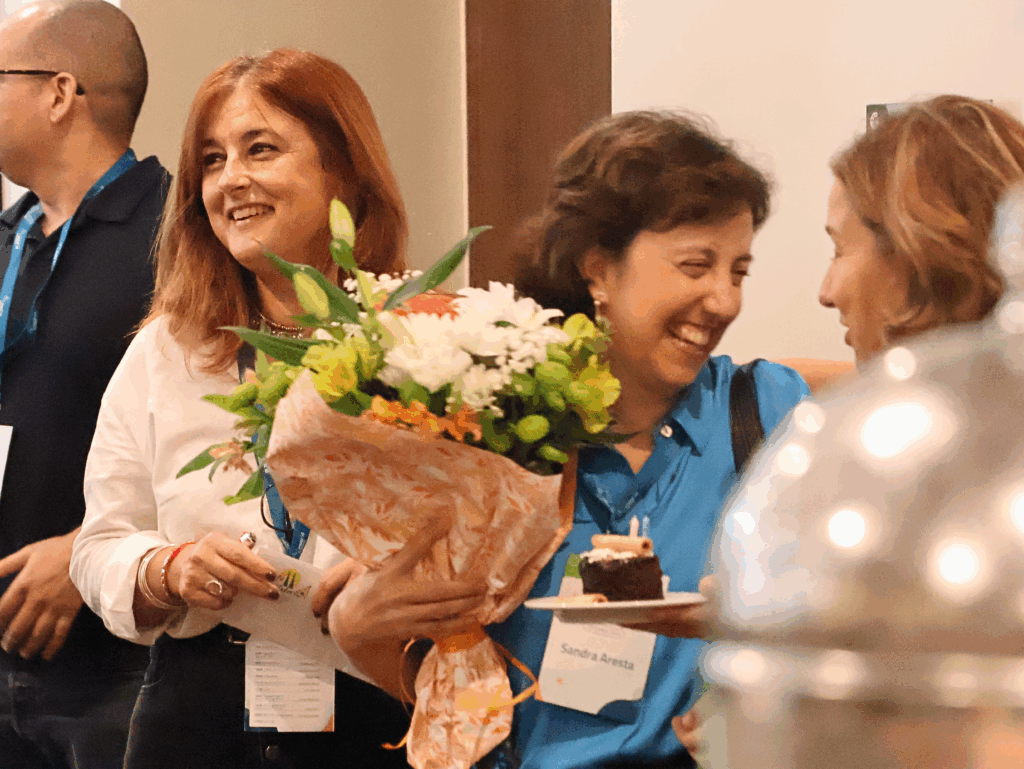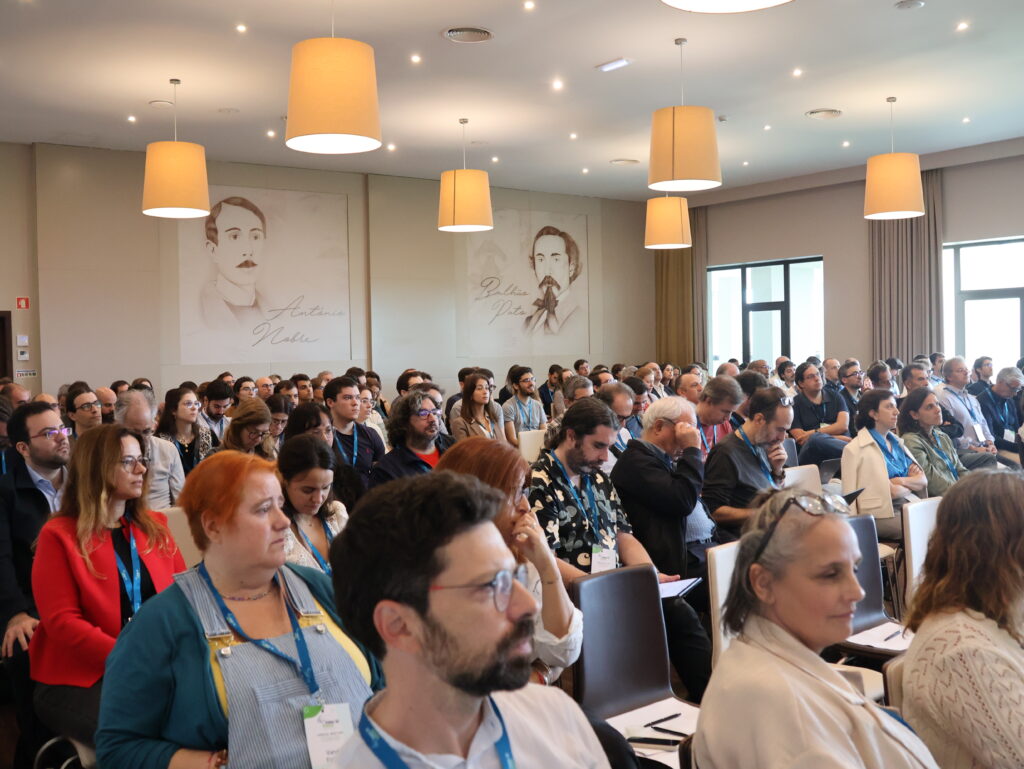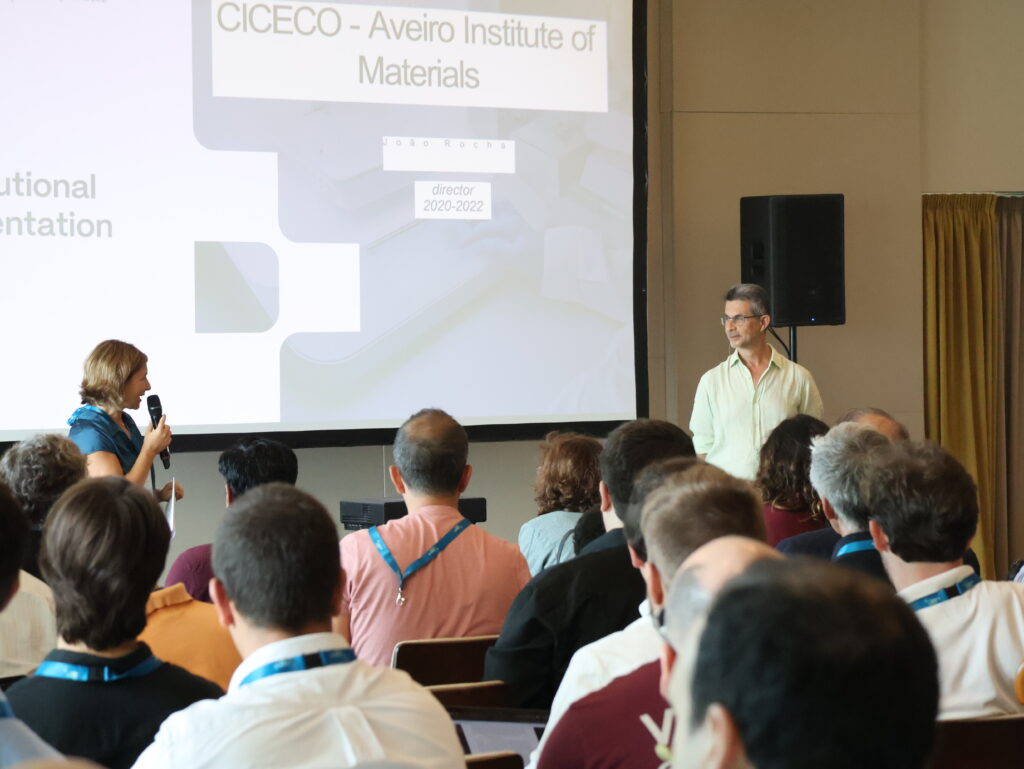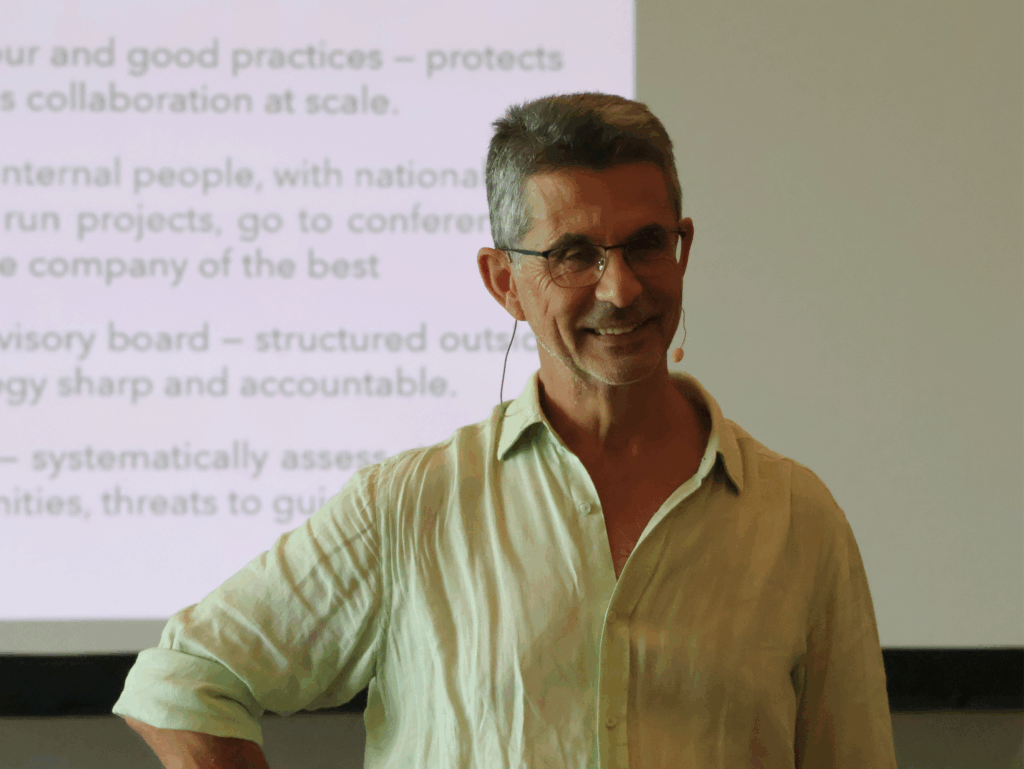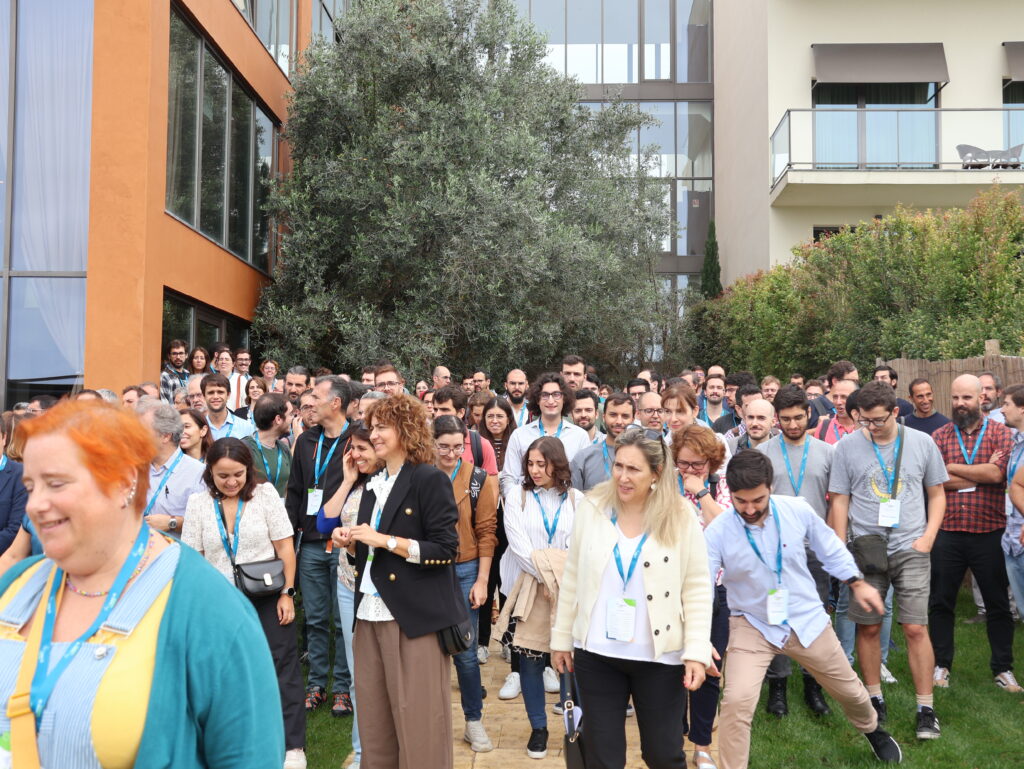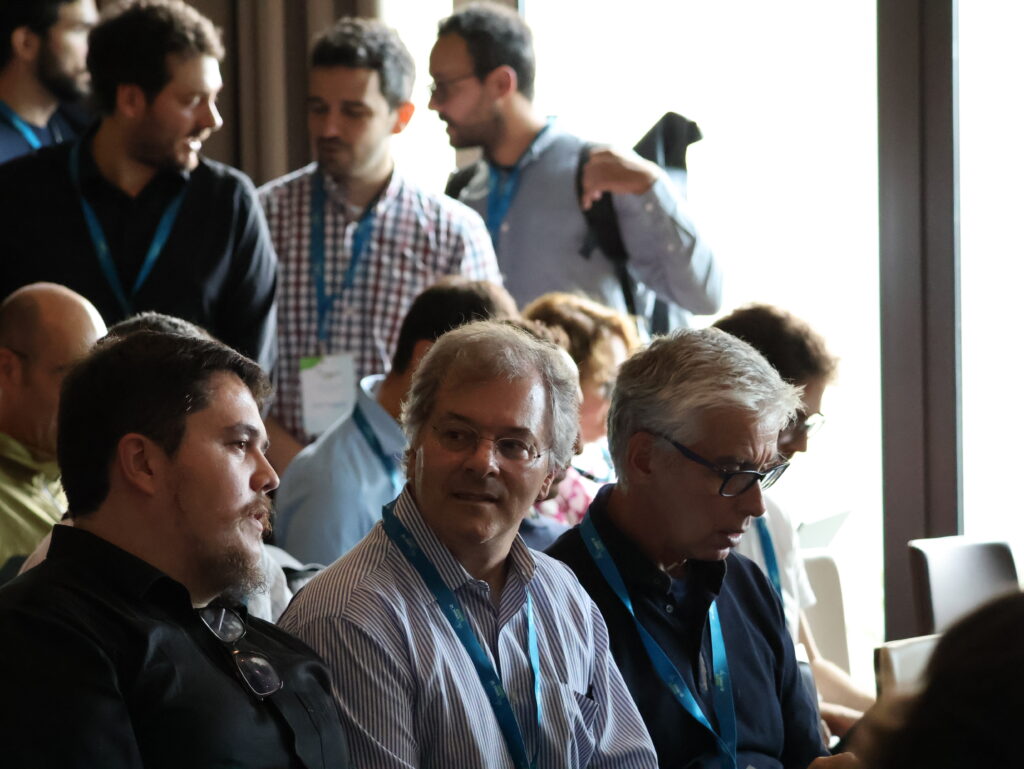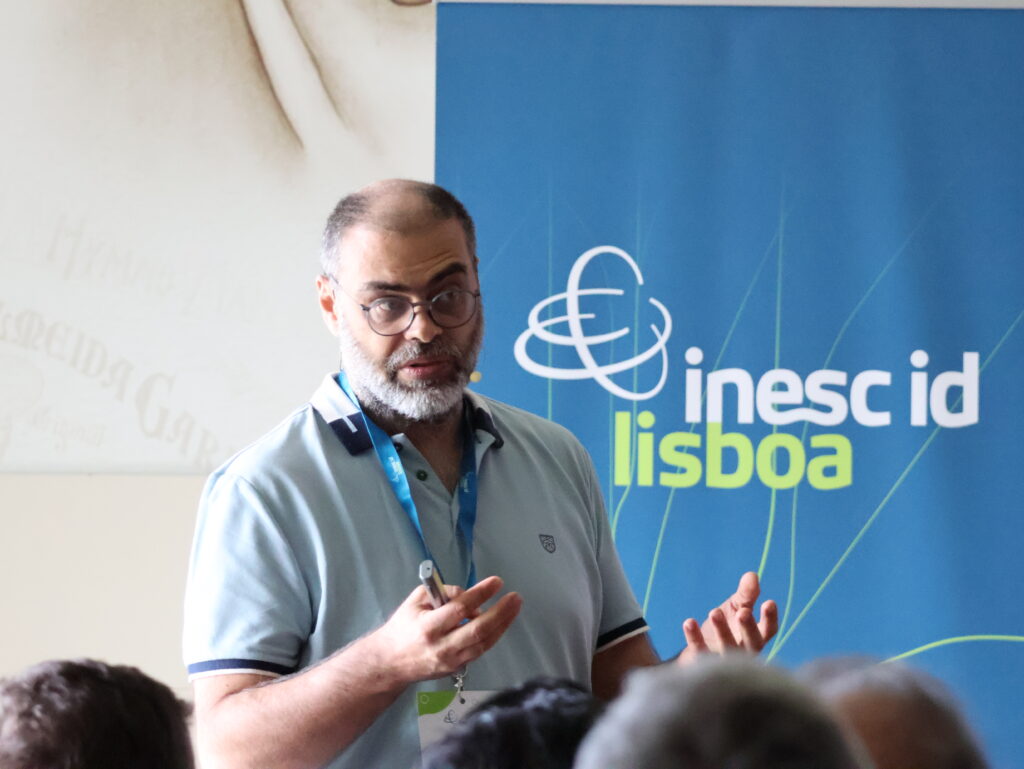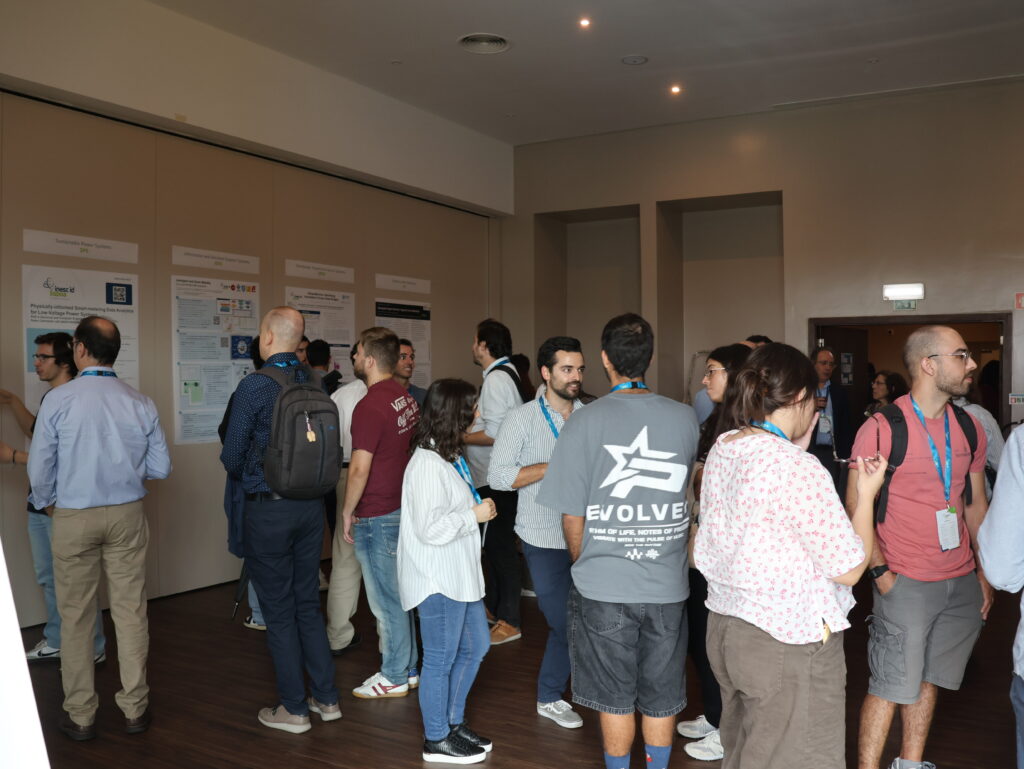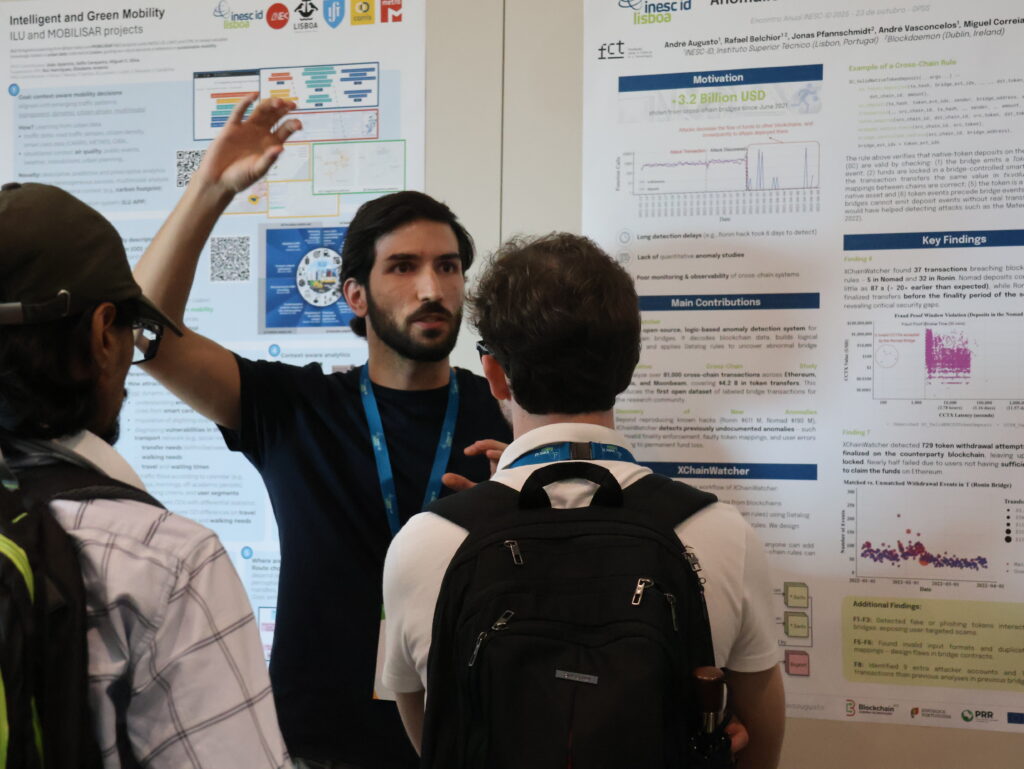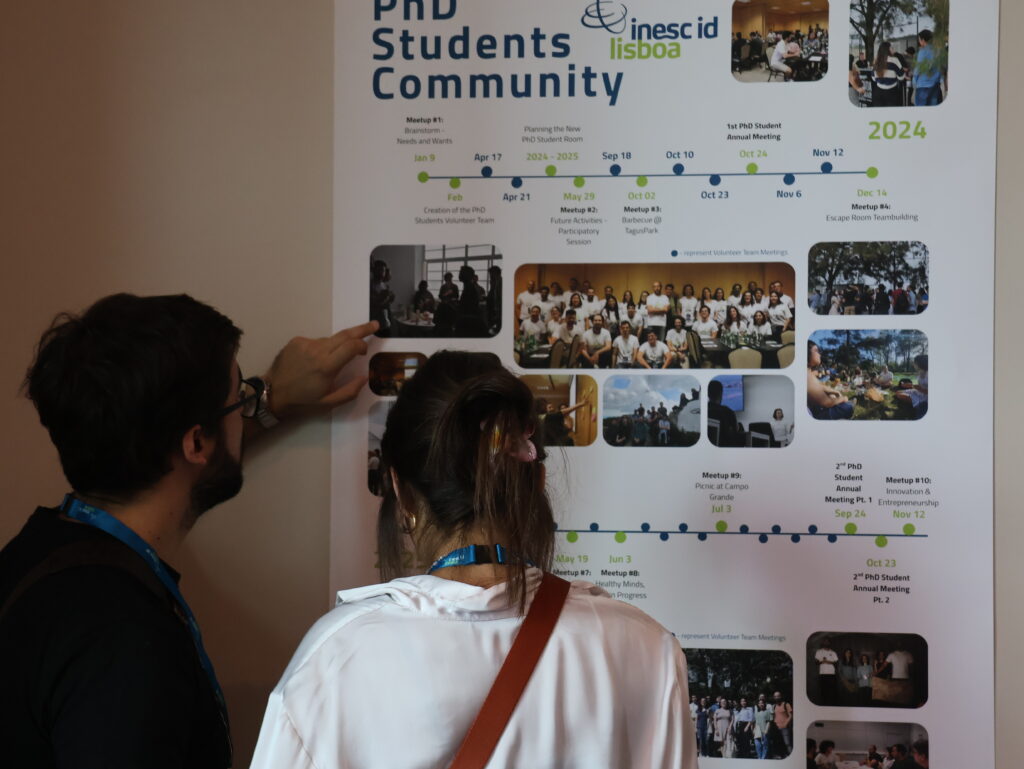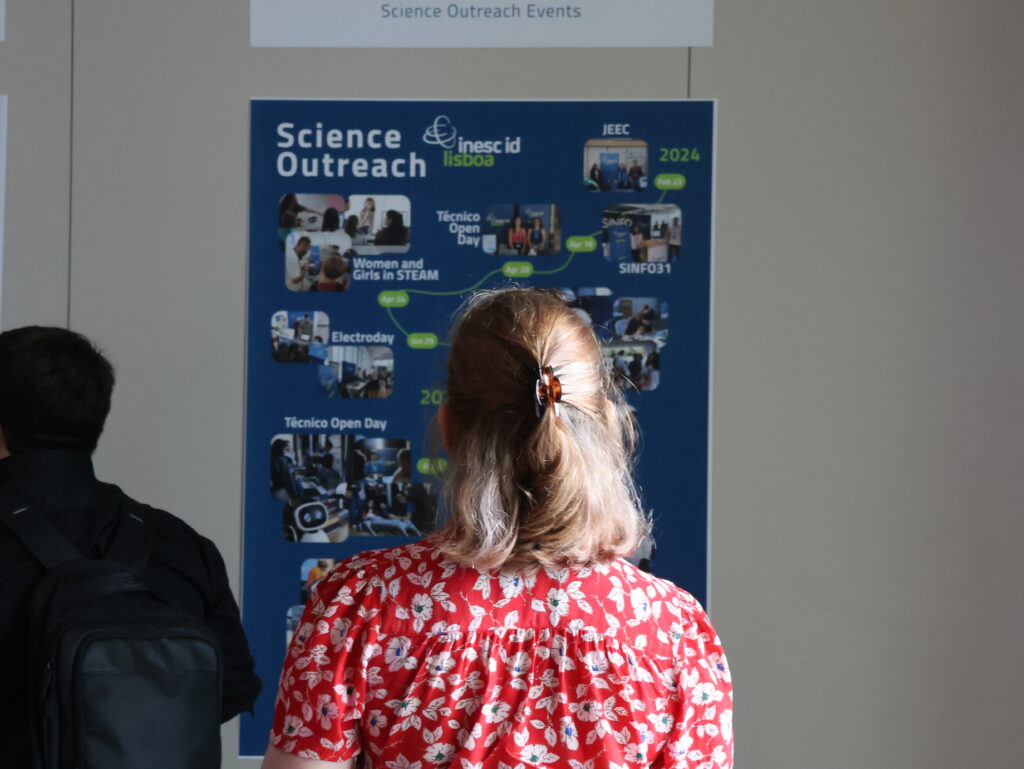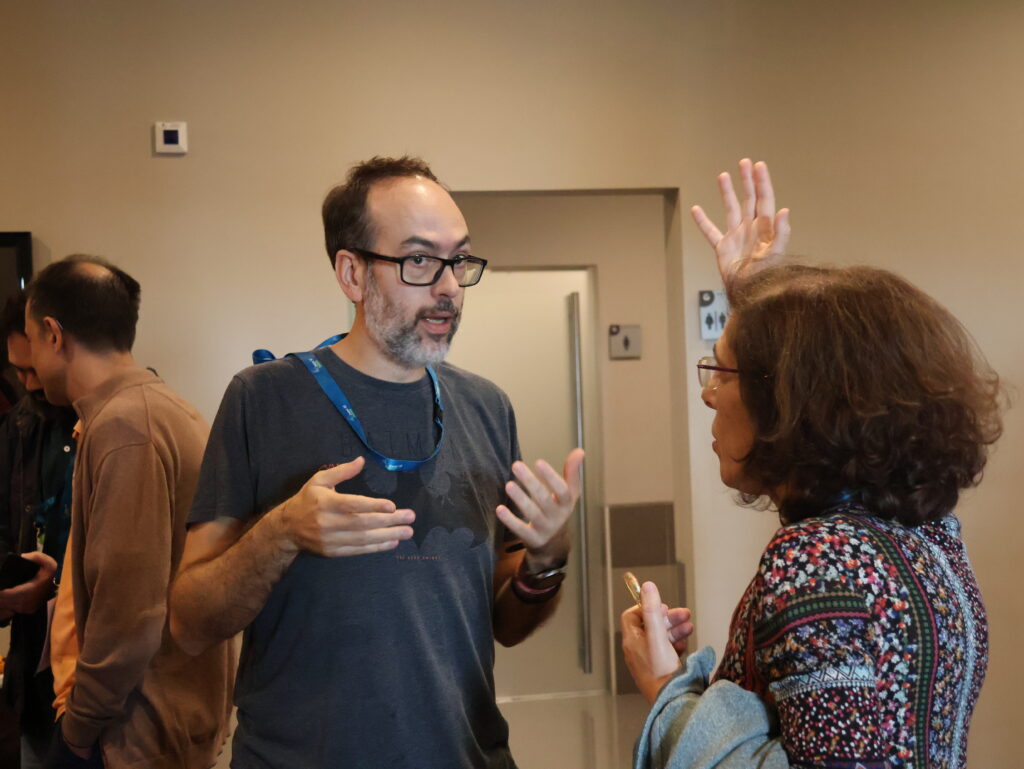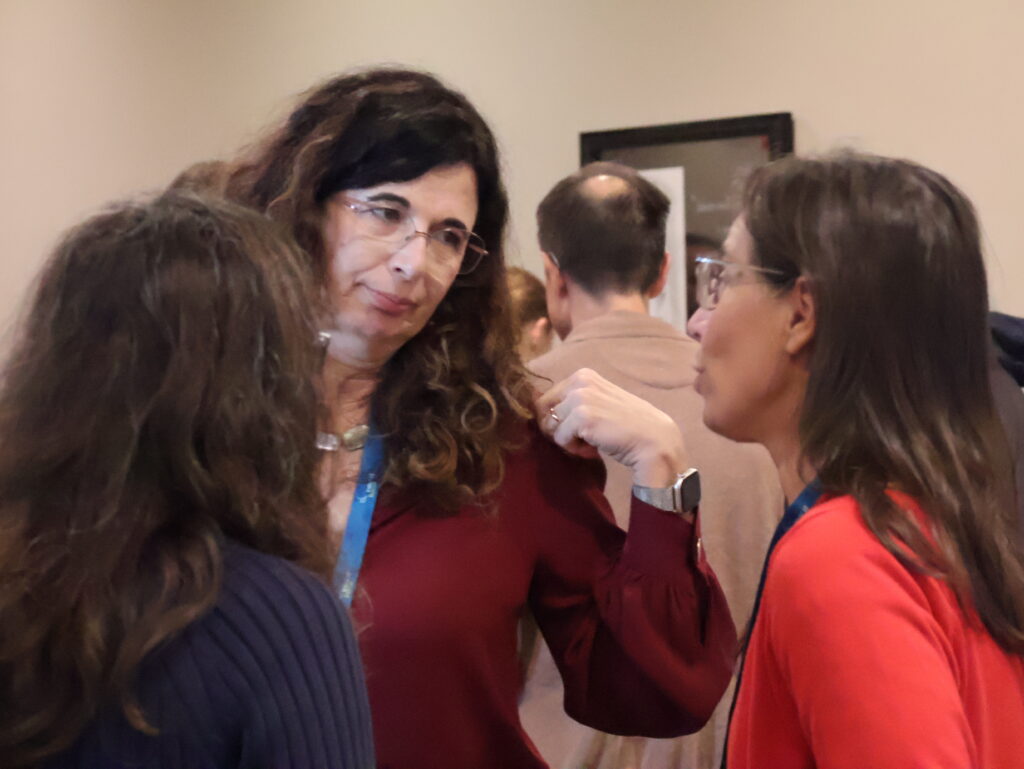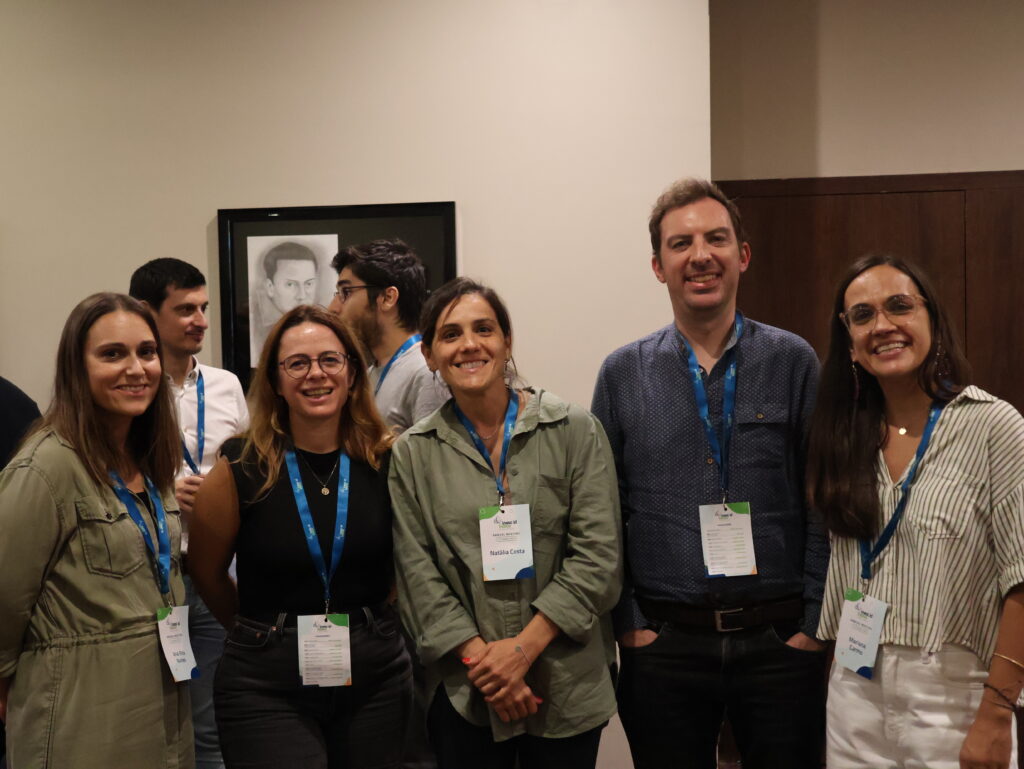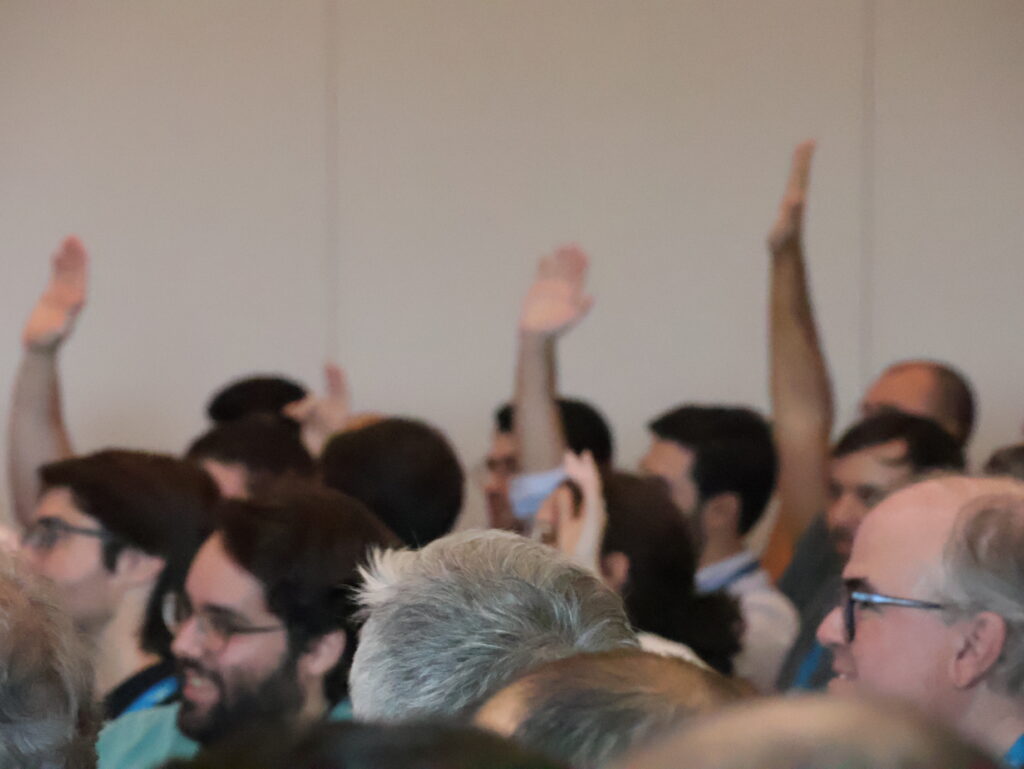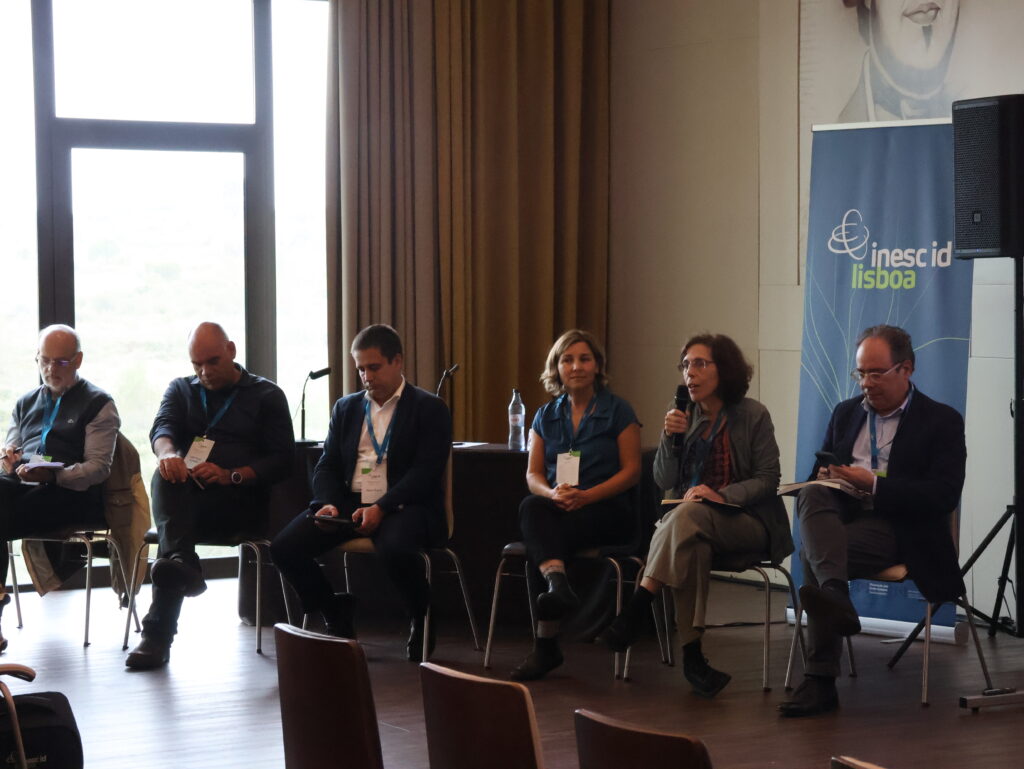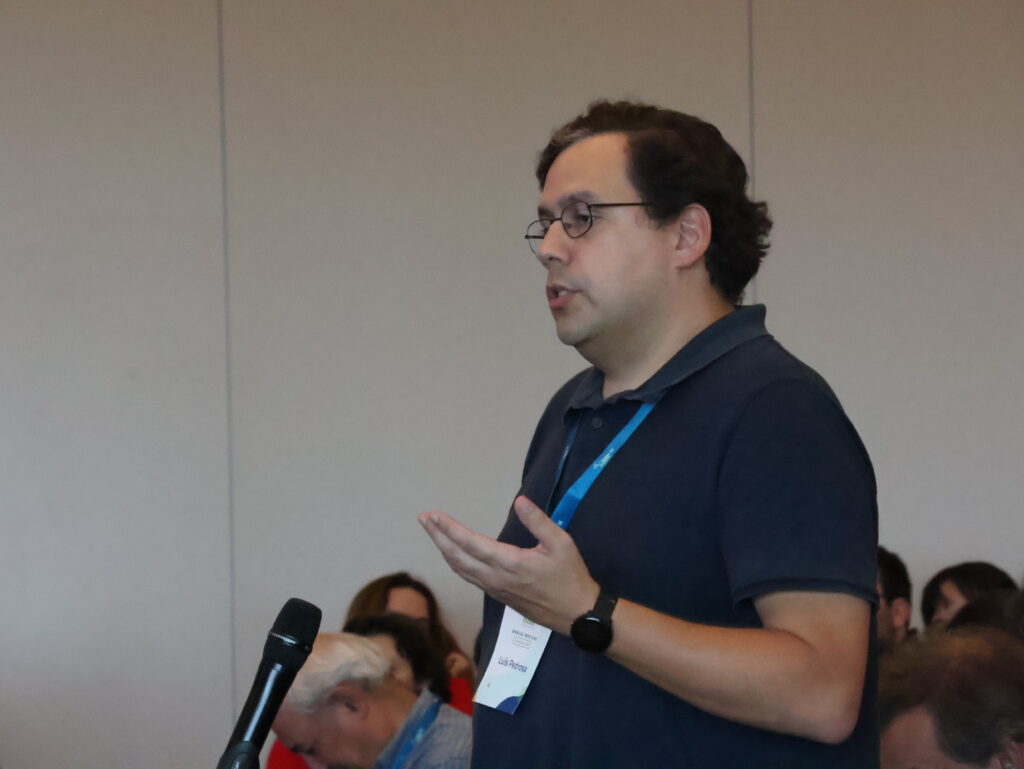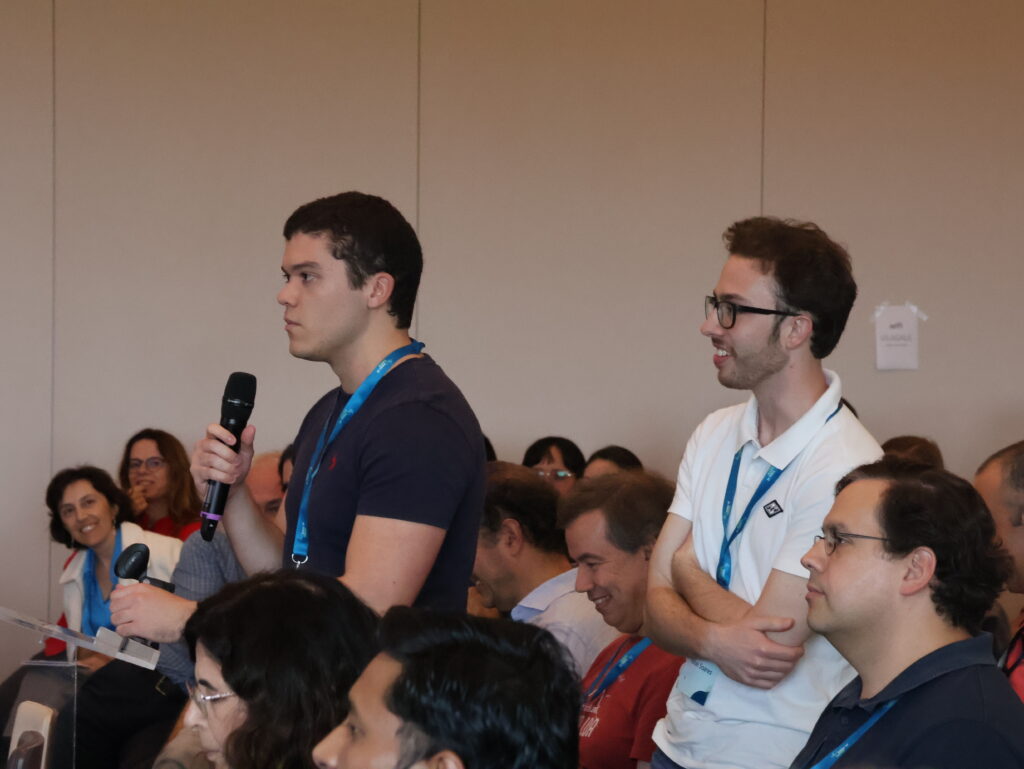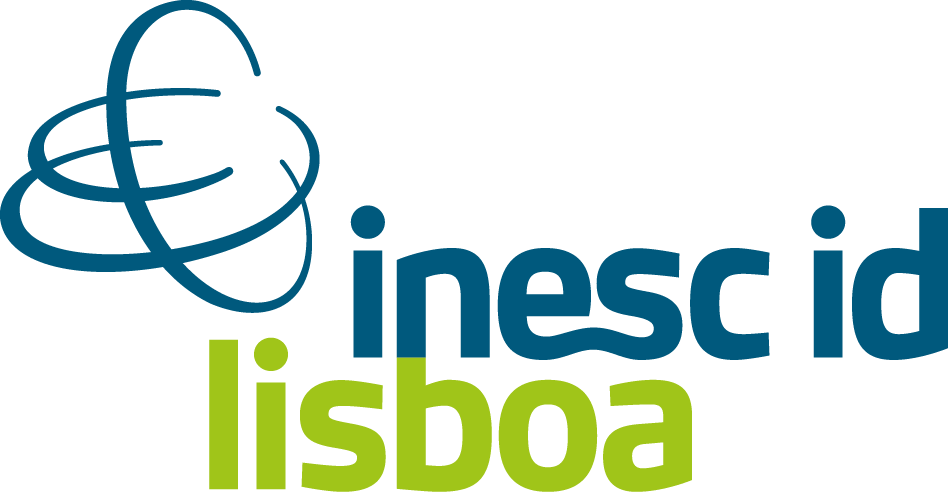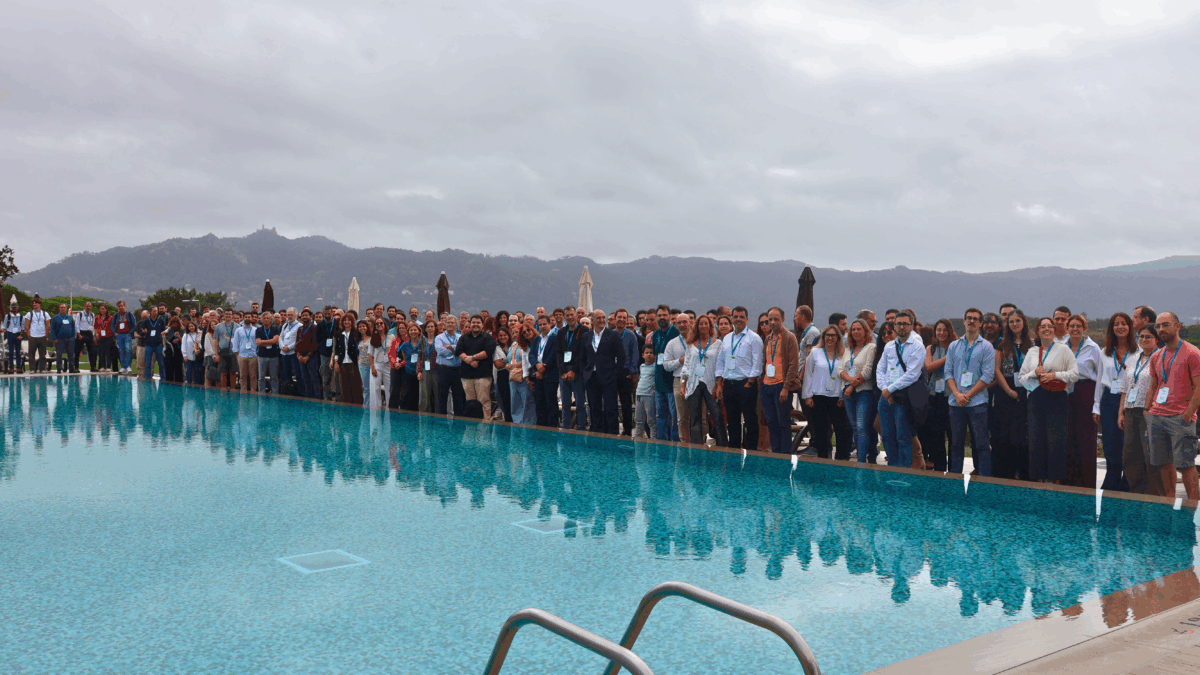
INESC‑ID Annual Meeting 2025: Year in review, showcasing excellence and a Town Hall
After a two‑year hiatus, in which the annual meeting was held jointly with INOV and INESC MN under the INESC Lisboa initiative, INESC-ID returned to hosting its own dedicated gathering.
This year’s venue was Vila Galé Sintra, on an autumn day shrouded in the region’s characteristic fog, which gradually revealed Palácio da Pena atop the hill and the historical town of Sintra below. With a record participation of nearly 200 members, the meeting took place on October 23 in this symbolic setting, associated for centuries with moments of retreat and reflection.
“I enjoyed seeing all of INESC-ID at the same venue , which is a rare sight and a first time for me. It gave me a more complete perspective of how many research projects there are.” – PhD student
Institutional overview, support teams in the spotlight, and a thought-provoking talk
Inês Lynce, President of the Board of Directors, opened the first session of the day, stepping in for Executive Committee Director Miguel Pupo Correia, who was away on professional duties in the U.S. She was joined by Executive Director João Paulo Carvalho, who presented a profile of the INESC-ID community, including upcoming infrastructure plans and challenges. He was followed by fellow Executive Director Nuno Roma, who offered a detailed account of the institute’s current financial situation.
Next came a session dedicated to INESC-ID’s support offices, with brief presentations from the teams who, often behind the scenes, play a vital role in the institute’s daily life. Executive Director Helena Galhardas spoke for Administrative Support and Technological Infrastructures, followed by Elisabete Rodrigues and Sandra Sá (Board Support), Vanda Fidalgo (Human Resources), Sílvia Castro (Innovation Management), Sandra Aresta (Knowledge Transfer), and Rodrigo Abril de Abreu (Communications and Outreach).
The morning concluded with an inspiring talk by guest speaker João Rocha, Full Professor of Chemistry at the University of Aveiro and current Coordinator of the Council of Associated Laboratories. He reflected on the functional model of CICECO – Aveiro Institute of Materials, which he led from 2002 to 2021, the role of fundamental research in national development, and the challenges of large-scale scientific coordination. The session ended on a lively note with an open exchange of questions from the audience.
European projects, research on the walls, and a new format for dialogue
The afternoon began with a presentation by researcher Hugo Morais, from the Sustainable Power Systems scientific area, on his extensive experience with European projects. Together with his team (Rita Nunes, Mariana Carmo, and Cindy Gusman), he shared the structure they have developed over the years, with a strong track record in securing European funding, offering practical advice, strategies, and lessons learned for those looking to follow a similar path. The session aimed to inspire other researchers to join this European research ecosystem.
Mid-afternoon, alongside a coffee break dedicated to conversation, reconnection and networking, came the PhD Students’ Poster Session. Transforming the event walls into a showcase, the exhibition featured one poster selected by each Scientific Area coordinator, highlighting the diversity and quality of research underway at INESC-ID. This session also marked the second part of the 2nd Annual Meeting of INESC-ID PhD Students, whose first segment took place in September, and reinforced the active role of students in the institute’s life.
The closing session, led by Luís Oliveira e Silva, introduced a new format: the Town Hall – an open conversation between the Board of Directors and the INESC-ID community, held in a Q&A format. The directors addressed questions posed primarily by PhD students, who represented around one-third of participants this year, on topics ranging from the institute’s visibility and student recruitment strategies, to support during and after the PhD journey. This final moment promoted transparency, feedback, and collective reflection on the future of the institute.
—
© 2025 INESC-ID
Images: © 2025 INESC-ID
